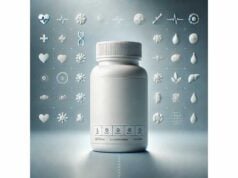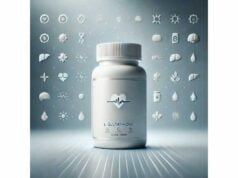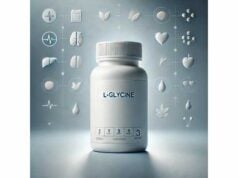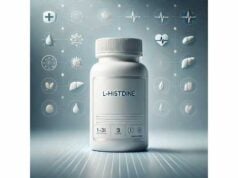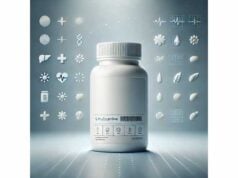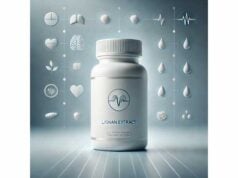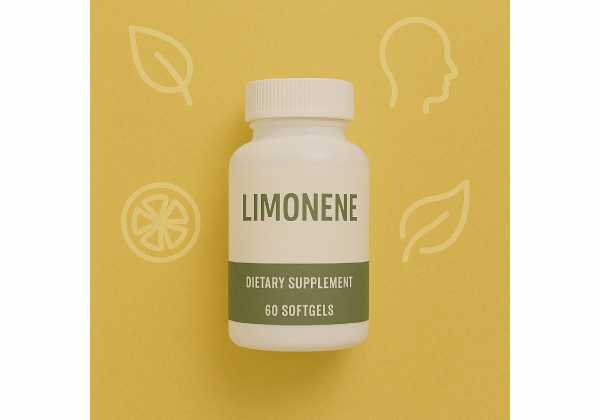
Limonene is a citrus-scented compound found in orange, lemon, and grapefruit peels, prized for its fresh aroma and broad utility. As a dietary supplement and functional ingredient, it appears in digestive formulas, aromatherapy blends, topical cosmetics, eco-friendly cleaners, and food flavorings. Early human research suggests limonene is absorbed and distributed in tissues, where it may influence cell signaling and inflammatory pathways. In everyday use, people choose limonene for occasional heartburn support, for mood-friendly aromatics, or as a gentle solvent for sticky residues. Yet this popular terpene is not risk-free: oxidized limonene is a well-known fragrance allergen in skincare, and high oral doses can cause stomach upset. This guide distills the evidence, clarifies dosage patterns used in practice, and outlines who should avoid limonene—so you can weigh potential benefits against real-world risks and choose a form and amount that fits your goals.
Quick Overview
- May support digestive comfort and a calmer stomach in some users; offers uplifting citrus aromatics.
- Skin sensitization risk rises when limonene oxidizes; patch-test new topicals first.
- Typical supplement use ranges 250–1,000 mg per day with meals or 1,000 mg every other day in short courses.
- Avoid use if you have a known fragrance allergy, active peptic ulcer, or are pregnant due to limited data.
Table of Contents
- What is limonene and how it works
- Evidence-backed benefits and limits
- How to use limonene day to day
- Dosage: how much and when
- Safety, side effects, and who should avoid
- Research snapshot: what the science says
What is limonene and how it works
Limonene is a monoterpene—an aromatic hydrocarbon that plants synthesize as part of their essential oil repertoire. In nature, it helps defend citrus fruits against pests and pathogens while attracting pollinators with a bright, clean scent. Two mirror-image forms exist: D-limonene (the common “orange” scent) and L-limonene (more “piney”). Most supplements and flavorings use D-limonene derived from citrus peel oil.
Absorption and metabolism. When taken orally, limonene is rapidly absorbed and processed by the liver into metabolites such as perillic acid and dihydroperillic acid. Short human studies show measurable blood levels of these metabolites after a single citrus-rich drink, and tissue studies have found limonene itself can accumulate in fatty tissues and specific organs. This distribution explains why effects may persist beyond the last dose, even as blood levels fall.
Key biological actions. In preclinical work, limonene has shown:
- Membrane fluidity and solvent effects that can influence how compounds dissolve and permeate.
- Modulation of inflammatory signaling (for example, pathways linked to cytokine expression).
- Phase I/II detox enzyme interactions, potentially shifting how the body processes chemicals.
- Neuro-aromatic effects: via olfaction, citrus terpenes are often perceived as “uplifting,” a quality used in aromatherapy for alertness and mood.
Forms you will encounter.
- Encapsulated oil or emulsions for oral use.
- Essential oil for aromatherapy or topical blends (always diluted).
- Food-grade flavoring for beverages and supplements.
- Household solvent in eco-cleaners and adhesive removers.
Because limonene is lipophilic, taking it with food—especially some fat—can improve tolerance and absorption. As with any essential-oil–derived ingredient, quality matters: choose products that specify D-limonene content, have oxidation controls (antioxidants, nitrogen-flushed bottles), and provide a recent manufacture or best-by date to minimize allergenic oxidation products.
Evidence-backed benefits and limits
Digestive comfort and reflux. Some consumers use D-limonene for episodic heartburn or a “heavy” feeling after meals. The proposed mechanisms include gastric motility support, a mild carminative action, and effects on the esophageal mucosal barrier. Clinical evidence here is limited and heterogeneous. While user reports are positive, well-controlled trials are scarce. If you try limonene for reflux, monitor symptoms carefully; a minority of people notice worsened reflux or nausea, particularly at higher intakes.
Aromatherapy and mood. Citrus aromas are widely used for perceived increases in alertness and calm. Short laboratory studies with citrus oils suggest transient improvements in mood or perceived stress. These effects likely stem from sensory pathways rather than systemic pharmacology, and they are best viewed as adjunctive—pleasant and motivating but not a treatment on their own.
Skin and scalp care (with a caveat). Limonene is frequently added to cosmetic formulas for fragrance and a sensation of freshness. It can enhance sensory appeal and, in some cases, aid in dissolving oily residues. However, oxidized limonene (limonene hydroperoxides) is a recognized contact allergen. Benefits therefore depend on formulation quality, packaging that limits air exposure, and personal sensitivity. Fragrance-free or low-fragrance options are better choices for sensitive or eczematous skin.
Solvent and household uses. D-limonene’s strong solvency dissolves glue, tar, and grease, making it a mainstay in citrus cleaners and label removers. When used as directed, it can be effective and more pleasant-smelling than petroleum solvents. Always ventilate well and avoid skin contact with concentrates.
Oncology research—early and exploratory. Human pilot studies have observed that oral limonene is absorbed, reaches tissues such as the breast, and may modulate cellular markers linked to proliferation. These are exploratory findings; large randomized trials confirming clinical benefit are lacking. Anyone with cancer should consult their oncology team before considering limonene, as interactions with treatments and trial protocols are possible.
Realistic expectations. Limonene is best framed as a supportive ingredient—useful for aroma, occasional digestive support for some people, and specialized solvent tasks—rather than a stand-alone therapy. Where research is early, treat claims cautiously and prioritize safety.
How to use limonene day to day
1) For occasional digestive support.
- Start low: 250–500 mg with a meal to gauge tolerance.
- If using a “short-course” regimen (commonly marketed for heartburn), some programs employ 1,000 mg every other day for several weeks. This pattern aims to balance exposure and tolerance; however, consult a clinician if you have chronic reflux, are using acid-suppressing medications, or have a history of ulcers.
2) As an aroma for mood and environment.
- Diffusion: Add a few drops of essential oil of citrus (high in limonene) to a water-based diffuser for 15–30 minutes in a well-ventilated room.
- Inhalation safety: Keep diffusers away from infants, pets, and people with asthma; stop if coughing, wheezing, or irritation occurs.
- Surface use: Essential oil residue can damage finishes. Protect wood, painted surfaces, and plastics.
3) In topical products.
- Prefer professionally formulated products listing limonene and antioxidants (e.g., tocopherol) to slow oxidation.
- Patch-test: Apply a small amount to the inner forearm once daily for three days. Stop immediately if redness, itching, or burning occurs.
- Store tightly capped, away from heat and light; discard if the scent turns harsh or resinous (a sign of oxidation).
4) As a household solvent.
- Choose purpose-made citrus cleaners; avoid direct skin contact with concentrated D-limonene.
- Wear gloves, ventilate, and keep away from open flames (limonene is combustible).
- Never mix with bleach or ammonia products.
5) Stacking and combinations.
- For digestive comfort, some combine limonene with ginger extract (e.g., 250–500 mg) or enteric peppermint oil. Introduce one change at a time and track responses for a week before adding the next.
- For scent routines, rotate citrus with non-sensitizing aromas (e.g., lavender or cedarwood) to reduce continuous fragrance exposure on skin.
Tracking results. Keep a brief log noting dose, timing, meals, and outcomes (relief, side effects). Over two to four weeks, patterns usually emerge showing whether limonene adds value for you.
Dosage: how much and when
Oral supplemental use (adults).
- Introductory range: 250–500 mg once daily with food.
- Common practice range: 500–1,000 mg per day, taken with a main meal; some protocols use 1,000 mg every other day as a short course for 2–4 weeks.
- Upper ranges in early research: Single-day intakes several grams have been explored in tightly supervised clinical settings. Those regimens were for pharmacokinetic study—not general wellness—and often produced gastrointestinal side effects. They are not recommended for self-directed use.
Topical exposure.
- In leave-on skincare, fragrance-level limonene often appears at ≤0.1–0.5% of the formula. Sensitivity varies widely; people with eczema or a history of fragrance allergy often do best avoiding fragranced products entirely.
- In rinse-off cleansers and shampoos, brief contact lowers risk, but patch-testing is still wise for sensitive users.
Aromatherapy.
- Use sparingly: 3–5 drops in a diffuser for a medium room, 15–30 minutes. Over-diffusing can irritate eyes and airways.
Timing with meals and medications.
- Take oral limonene with food to lower the risk of nausea and reflux.
- If you use prescription medications, separate limonene by several hours while you evaluate tolerance. Although strong drug interactions are not well documented, essential-oil–derived compounds can influence metabolizing enzymes in theory, and individual responses vary.
Special populations.
- Pregnancy and lactation: Robust safety data are lacking; avoid oral supplementation unless a clinician advises otherwise.
- Children: Avoid oral limonene supplements due to limited data and higher risk of irritation from aromatics.
- Gallbladder disease: If you have active gallbladder pain, stones, or a history of biliary colic, discuss any supplement with your clinician first; oils can sometimes aggravate symptoms.
When to stop. Discontinue if you experience persistent heartburn, abdominal pain, rash, wheezing, dizziness, or any unusual symptom after use. If symptoms are severe or don’t resolve, seek medical advice.
Safety, side effects, and who should avoid
Common side effects (oral).
- Belching with citrus aftertaste, mild heartburn, nausea, or loose stools—often dose related and improved by taking with meals or reducing the dose.
- Headache or lightheadedness in sensitive users.
Topical and airborne reactions.
- Allergic contact dermatitis from oxidized limonene is well documented. Reactions typically present as itchy, red, or scaly patches where fragranced products are applied. Risk rises as products age and oxidize after repeated air exposure.
- Airway irritation from concentrated aroma exposure can occur in people with asthma or scent sensitivity.
Who should avoid or seek medical advice first.
- Anyone with a known fragrance allergy, especially to citrus or “limonene hydroperoxides.”
- People with active peptic ulcer disease or severe gastroesophageal reflux.
- Pregnant or breastfeeding individuals (insufficient safety data for oral supplementation).
- Those with significant liver disease or on complex medication regimens should consult a clinician before use.
Product quality tips to reduce risk.
- Buy from brands that disclose D-limonene content and include antioxidants to slow oxidation.
- Choose sealed, light-protected packaging; recap immediately after use.
- Heed expiration dates; if a product’s scent becomes sharp or resinous, discard it.
If a reaction occurs.
- For mild skin irritation, stop the product and use bland emollients. If symptoms persist, see a dermatologist and mention fragrance allergens as a possibility.
- For wheeze, throat tightness, or severe rash, seek urgent care.
Environmental and household cautions.
- Concentrated D-limonene is combustible—keep away from flames and store safely.
- Avoid pouring large amounts into drains; follow label directions for disposal.
Research snapshot: what the science says
Pharmacokinetics in humans. Early phase trials administering oral D-limonene primarily aimed to understand absorption, metabolism, and tolerability. Findings show that limonene is absorbed, converted to metabolites such as perillic acid, and reaches tissues; gastrointestinal effects were the most common adverse events at higher intakes.
Tissue distribution and biomarker signals. In a neoadjuvant context (before surgery), short courses of oral limonene in women with early-stage breast cancer led to measurable limonene levels in breast tissue and changes in select cell-cycle markers. These studies were small and not designed to evaluate long-term outcomes but do confirm target engagement—limonene reaches human tissue in vivo.
Allergenicity in cosmetics. Regulatory and safety bodies recognize oxidized limonene as a contact allergen. Opinions from scientific committees inform labeling requirements and concentration limits, especially for leave-on products and products that may oxidize over time. For consumers, this translates to favoring fresh, well-packaged formulas and performing patch tests.
Food and flavoring safety. European assessments have repeatedly reviewed limonene within groups of aliphatic hydrocarbons used as flavorings, concluding that, at typical dietary levels, these substances do not pose a safety concern for the general population. Such opinions help explain why limonene is widespread in foods and beverages as a flavoring agent.
Where evidence is still thin.
- Digestive support claims: Popular but under-studied in modern randomized trials.
- Cancer outcomes: Mechanistic and exploratory biomarkers exist; clinical efficacy remains unproven.
- Drug interactions: Limited human data; cautious spacing from medications is prudent until more is known.
Bottom line. Limonene’s safety at food-flavoring levels is well supported, and its pleasant aroma has practical, motivational value. For oral supplementation beyond typical dietary exposure, use conservative dosing, prioritize quality, and align your plan with a healthcare professional—especially if you have chronic conditions or take prescription drugs.
References
- Phase I and pharmacokinetic study of D-limonene in patients with advanced cancer 1998 (RCT/Phase I)
- Human Breast Tissue Disposition and Bioactivity of Limonene in Women with Early-Stage Breast Cancer 2013
- Opinion on fragrance allergens in cosmetic products 2012 (Guideline)
- Flavouring Group Evaluation 25, Revision 3 (FGE.25Rev3): Aliphatic hydrocarbons from chemical group 31 2015 (Guideline)
- Effect of d-limonene and its derivatives on breast cancer in human trials: a scoping review and narrative synthesis 2021 (Systematic Review)
Disclaimer
The information in this article is educational and general in nature. It is not a substitute for personalized medical advice, diagnosis, or treatment. Do not start, stop, or change any medication or supplement without consulting a qualified healthcare professional who knows your medical history. If you are pregnant, breastfeeding, managing a chronic condition, or have a history of fragrance allergy, seek professional guidance before using limonene.
If you found this guide helpful, please consider sharing it with friends or colleagues on Facebook, X (formerly Twitter), or any platform you prefer. Your support helps us continue creating careful, people-first health content. Thank you.

